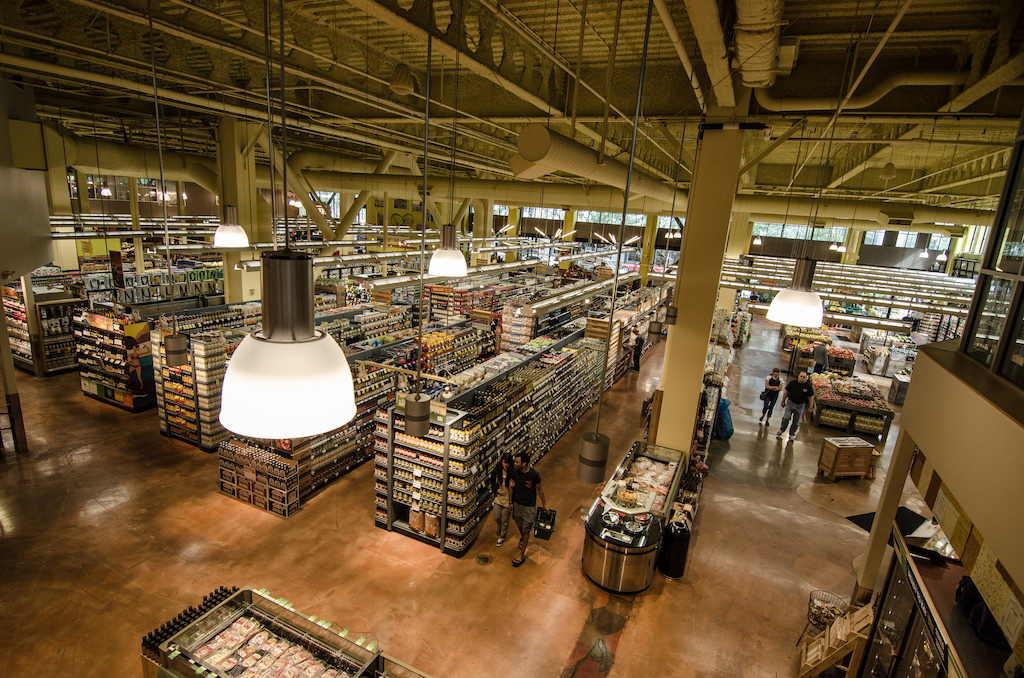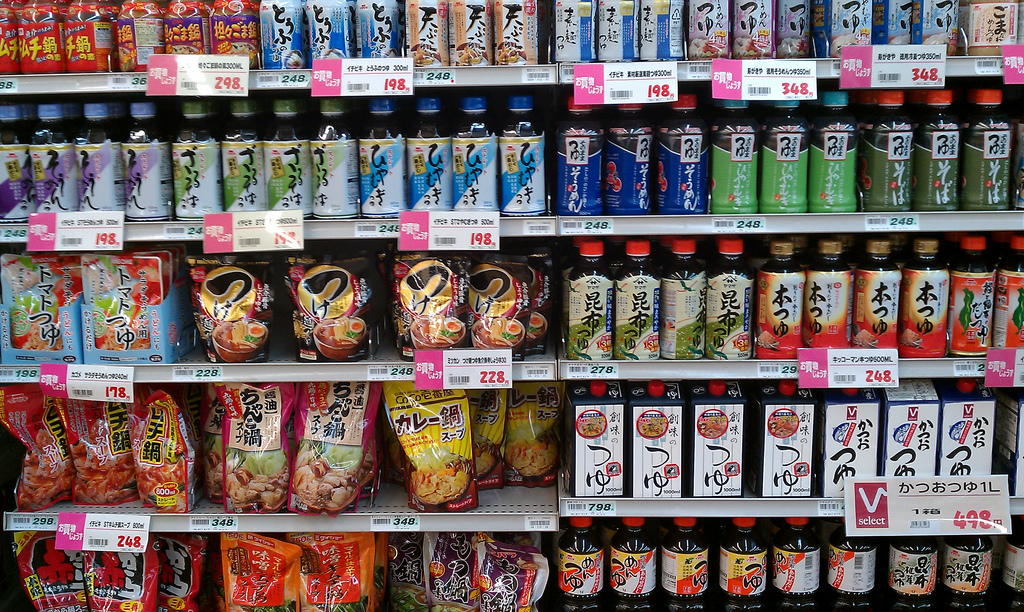
10 Tricks Supermarkets Use to Get You to Buy More
١٠ حيل تخدعنا بها مراكز التسوق لشراء المزيد
There’s nothing wrong with making customers feel at ease. As a buyer, the important thing is to know how supermarkets work: here are 10 essential supermarket tricks.
The art of suggestion and kindness draws on the science of layout, on the choice of music, on scents artfully sprayed onto strategically positioned bags of chips that we didn’t set out to buy (but on seeing them there, are already tempted). And so, the special art of science, psychology and neuro-physiology are all brought to life in the setting of a modern supermarket.
How supermarkets trick you
Today, shopping malls are bringing together and focusing what used to be lots of individual shops and local stores. There has been a growing trend around the world for decades. In Italy, one goes to the supermarket to meet 70 per cent of the family’s food needs, and that goes for several other countries too. And once you’re there, 60 per cent of purchases are unplanned, impulse buys.
Of course it goes without saying that major retail chains have really honed and polished their skills in improving the customer experience, and here we reveal some of the tricks of the trade. There’s nothing wrong with being tempted into buying a little more, but being aware is a way of choosing between resisting or yielding.
1. Deep, spacious baskets and trolleys
It may seem normal, but the mere fact of providing customers with shopping carts and baskets is one crucial way of making them feel comfortable. 75 per cent of those who hold a basket for shopping always buys something, compared to just 34 percent of those not holding it. In some countries at the entrance to the supermarket you’ll find a smiling employee holding out baskets for customers. These plastic containers with added wheels are as deep a wishing well: in 20 years the capacity of the US shopping trolley has doubled.
2. Loyalty cards
Do your shopping with us and get discounts and prizes. What do supermarkets get from this strategy? First, they can do sophisticated market research. Protocol studies are under way that can match our purchasing behavior in a store to ads on Facebook, and once we receive a loyalty card we tend to prefer the store that sent it. Finally, it seems that 42 per cent of us, spend more money when we become a card owners, perhaps because it makes us think that the more we buy, the bigger the discounts and that therefore we’re spending less. It should be noted that discounts are generally made on products that we wouldn’t normally purchase anyway.
3. In-store jingles
Music deeply affects people’s mood and there are so many ways to use its influence. Cheerful music which we sing along to conditions us to buy because of our good mood and attitude; but even a slower song can make us buy more, getting our pace to about 90 steps per minute. Music with fewer than 90 beats per minute makes us slow down unconsciously, and makes us linger in the aisles.
4. Necessities are way down, or hidden
The science of layout reaches unexpected sophistication in shelf arrangements. Every chain has its own well-coded areas, whether its the entrance area, the bakery or the frozen foods section. But the general rule that emerges is that all the necessities such as flour, sugar, salt and especially UHT milk sit on shelves that are concealed and distant from both the entrance and the exit, prolonging wandering among lanes, which increase the likelihood of buying things that weren’t wanted originally.
5. Things always cost .99
Items that cost 5.00 will be sold for 4.99 and the reason for is so that they’re easily remembered. Rounding up involves mental effort that is greater than the process of storing the first digit. Given the barrage of information that customers deal with, pricing needs to be transmitted quickly. The most convenient way of doing it, in terms of memory and attention, is to remember just the first digit. So we appear to spend less.
6. Buy two and get three
This classic offer has been proven to increase sales by more than 150 per cent. In spite of saving 30 per cent, operations like this lead us to consume far more than usual.
7. Bestsellers
Staple products, canned goods, butter and milk attract people into supermarkets but almost everyone knows how much they cost on average by heart. To beat the competition and spread the idea of a convenient price point, best sellers at discounted prices are spread throughout the store. Supermarkets then compensate these by raising prices on other products.
8. Shuffle the cards
When we go shopping there’s always a dozen products we buy routinely. That’s why managers occasionally mix up goods between aisles and shelves. This means that when we go there to get the usual package of something and – lo and behold – in its place we find another item that is twice as expensive and we think, “OK, let’s try it”.
9. At eye level
Products displayed at eye level sell twice as much, so for this reason often the most expensive items are placed there. Below them you will almost always discover cheaper alternatives.
10. The most alluring items at the checkout
It’s inevitable. Waiting in line at the checkout, you’ll be tempted by a variety of irresistible, colorful sweets, the blandest of food accessories and the most alluring packaging. These hard-to-resist temptations for adults become simply irresistible for kids bored with shopping, and laid out at their eye level, within easy reach of little hands, parents will more often than not buy things not normally on their list – just to avoid a tantrum.
source: lifegate.com
يسعى التجار والمسؤولين عن مراكز التسوق إلى تهيئة المناخ المناسب لحث المستهليكن على شراء أكبر قدر من المنتجات والبضائع، بغض النظر عن مدى حاجتهم الفعلية لهذه المعروضات.
الكاتبة جينيفر ديلغادو سواريز قالت في تقرير نشرته مجلة “رينكون دي لا بسيكولوخيا” الإسبانية، إن مراكز التسوق تستخدم كل صنوف التقنيات والخداع، من أجل دفع الزبائن لإنفاق مزيد من الأموال وشراء الكثير من البضائع، بما أن هنالك تفاصيل صغيرة قد لا ننتبه لها إلا أن عقلنا الباطن يتأثر بها. وذلك بحسب الجزيرة نت.. ومن أبرز تلك التقنيات والحيل:
1- عربات تسوق كبيرة لنملأها
هل كنت تعلم أن العربات في مراكز التسوق ظهرت في عام 1938، ومنذ ذلك الوقت زاد حجمها بشكل تدريجي.
وهي في الأصل تم تصميمها لتسهيل عملية الشراء، ولكن بمرور الزمن اكتشف خبراء التسويق أنه كلما زاد حجم هذه العربة زادت مشتريات الزبون، حيث إن من تكون عربته مملوءة للنصف يشعر بأنه لم يشتر كل ما يلزمه.
2 – وضع المنتجات عند مستوى العين
في مراكز التسوق يتم وضع المنتجات التي يراد شراؤها بكثافة عند مستوى العين.
وبهذا يمكننا أن نراها بشكل أسهل وأفضل. وعلى العكس من ذلك فإن الأشياء الرخيصة يتم وضعها في الرفوف السفلية، حتى لا ننتبه إليها كثيرا.
ويمكن ملاحظة أن الحلويات تكون موضوعة عند مستوى منخفض يتناسب مع طول الأطفال، حتى ينتبهوا لها ويقنعوا آباءهم بشرائها.
إضافة إلى ذلك، فإن المنتجات التي يراد تسويقها أكثر توضع في الجانب الأيمن بما أن أغلب الناس يستخدمون اليد اليمنى، وبالتالي ينظرون أكثر على اليمين.
3- السعر يحتوي على الرقم تسعة
هذه الخدعة قديمة جدا إلا أنها لا تزال مستخدمة بشكل واسع، والسبب وراءها هو أننا عادة ما ننظر فقط إلى الرقم الأول على اليسار، ولا ننتبه للقطع النقدية الصغيرة بعد الفاصل، ولذلك فإن سعر الكثير من المنتجات يكون مثلا 9.90 دولارات، ونشعر بأن سعرها بكل بساطة هو تسعة دولارات، رغم أنه في الواقع عشرة دولارات تقريبا. هذه الخدعة تدفعنا لإنفاق أموال إضافية دون أن ندرك ذلك.
4- تغيير مكان الكماليات
لا يمكن لمراكز التسوق تغيير أماكن السلع باستمرار، بما أن ذلك سوف يزعج الزبائن ويتعبهم. ولكن من حين لآخر يتم تغيير بعض الأقسام لدفع الزبائن للتجول والانتباه لبقية السلع وشراء الكماليات، بعد أن كانوا معتادين التوجه لأقسام محددة وشراء ما يلزمهم فقط دون أن ينتبهوا لبقية المعروضات.
5- المنتجات الأساسية في أبعد مكان
يتم تحديد مكان كل نوع من المنتجات بشكل دقيق ومحسوب، وهو ما يؤثر بشكل مباشر على المبيعات، ولذلك فإن المواد الأساسية مثل الحليب والبيض توجد في آخر المحل، وبذلك يكون الزبون مجبرا على قطع مسافة طويلة يمر خلالها بالعديد من المنتجات الأخرى، على أمل أن يتم إغراؤه لشراء أشياء لم يكن يخطط لها.
6- المنتجات التي لا يمكن إرجاعها توجد في مدخل المحل
في أغلب محلات “السوبرماركت” يتم وضع المنتجات التي لا يمكن إرجاعها في المدخل، مثل الزهور والمخبوزات.
والهدف من ذلك هو إغراء الزبون لشرائها حال دخوله، بما أن عربته تكون فارغة، ويتأثر بسرعة بمنظر ورائحة الزهور، أو المخبوزات خاصة أن الأبحاث العلمية أظهرت أنها عندما تكون ساخنة تنشط الغدد اللعابية وتدفعنا للشراء.
7- السلع الأغلى ثمنا موجودة دائما قرب الصندوق
عندما ننتهي من التسوق ونصل إلى مكان الدفع، غالبا ما نقف في طابور الانتظار قليلا. وفي الأثناء تكون بجانبنا الحلويات والمجلات ومشروبات الطاقة والبطاريات والعلكة، وكل أنواع المنتجات التي لم نخطط لشرائها.
ويجدر الحذر من أن كل هذه المنتجات عادة ما يكون ثمنها مرتفعا، ولكننا نضطر لشرائها لاعتقادنا أننا نحتاجها، أو لأن الأطفال أصروا على ذلك.
8- “النقاط”.. حيلة لزيادة الإنفاق
عادة ما تعرض محلات التسوق بطاقات للعملاء الأوفياء، يجمعون فيها النقاط من أجل الحصول على تخفيضات أو هدايا.
ولكن غالبا لا يمكن الحصول على هذه النقاط إلا بعد تجاوز سقف إنفاق معين، وهكذا فإن المحلات تضمن أن الزبون الذي كان في الأصل يعتزم شراء احتياجات بقيمة عشرين دولارا، يغير رأيه ويصرف ثلاثين دولارا، للحصول على تلك النقاط، التي لن تفيده بشيء في الواقع.
9- كلما كانت المحلات أكبر كان ذلك أفضل
الحجم مهم جدا، وقد أظهرت الدراسات أن المحلات الواسعة غير المكتظة بالناس تدفعنا لشراء كميات أكبر من المنتجات، كما أن حجمها الكبير يمكنها من تقديم عروض وتخفيضات بشكل أوضح.
فعندما يكون مركز التسوق شاسع المساحة لا نعاني من الاكتظاظ، ونأخذ وقتا أطول لملء العربة، وبالتالي نشتري بضائع أكثر.
10- الموسيقى لزيادة المبيعات
في السنوات الأخيرة يمكن ملاحظة أن كل محلات “السوبر ماركت” تقوم بتشغيل الموسيقى طوال الوقت. وهذه ليست مصادفة أو مجرد ترفيه على الزبائن، بل إن الأبحاث العلمية أظهرت أن مقاطع الموسيقى الهادئة والمريحة تشجع الناس على إنفاق مزيد من المال.
وعلى العكس من ذلك فإن الموسيقى الصاخبة لها تأثير عكسي.
وأفضل الاختيارات في هذا الصدد هو الموسيقى الكلاسيكية، التي تريح الأعصاب وتبعث شعورا جياشا في الزبون وتدفعه لشراء المزيد.









